Silver plated is a popular way to add a layer of silver to a base metal like copper or brass. The process involves applying a thin layer of silver to the base metal using various techniques. As a result, you get a piece of jewelry or silverware that looks like sterling silver but costs much less.
In this blog post, we'll explain what you need to know about silver-plated, sterling silver, rhodium-plated, and gold-plated jewelry.
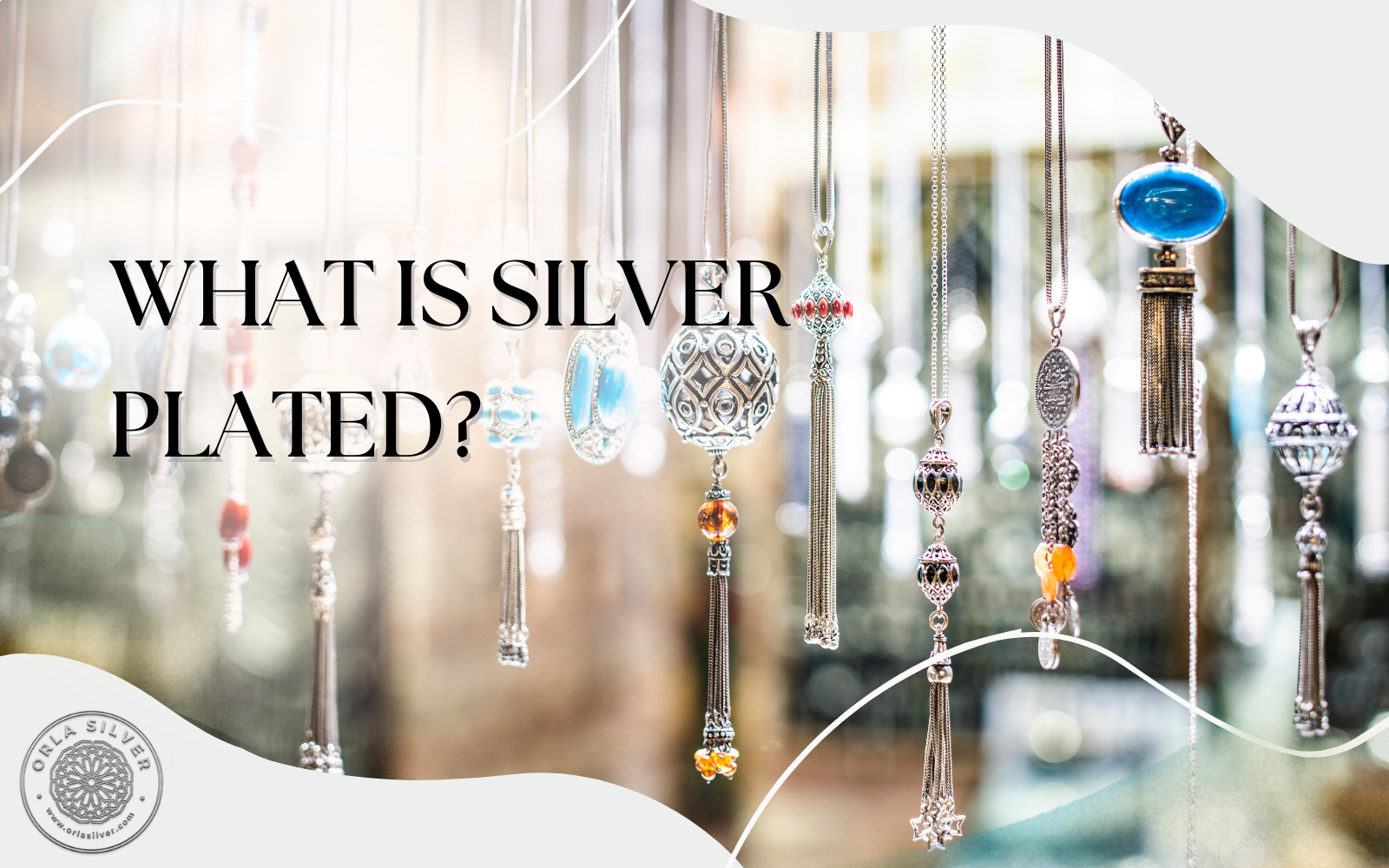
What Does Silver Plated Mean?
Silver plated is a process of coating a base metal with a thin layer of silver. In other words, it is the application of a layer of silver onto another metal. Silver plated items look like solid silver but are not made up of it.
The base metal used in silver plates can be copper, brass, nickel, or any other less expensive metal. The thickness of the silver layer can vary depending on the quality and cost of the item.
What Is 925 Sterling Silver Plated?
925 sterling silver plated is a layer of silver applied to a base metal, usually copper or brass, in a process called electroplating. The term "925" indicates the purity of the silver in the plating - 92.5% silver and 7.5% other metals, usually copper. This is the same purity as plated sterling silver, which is considered high quality and widely used in jewelry making.
What Is Rhodium Plated Sterling Silver?
One type of silver plated commonly used in jewelry making is rhodium-plated sterling silver. Rhodium is a rare and highly reflective metal from the platinum family. When rhodium is added to sterling silver, it not only enhances the luster and shine of the piece but also protects it from tarnishing and scratches.
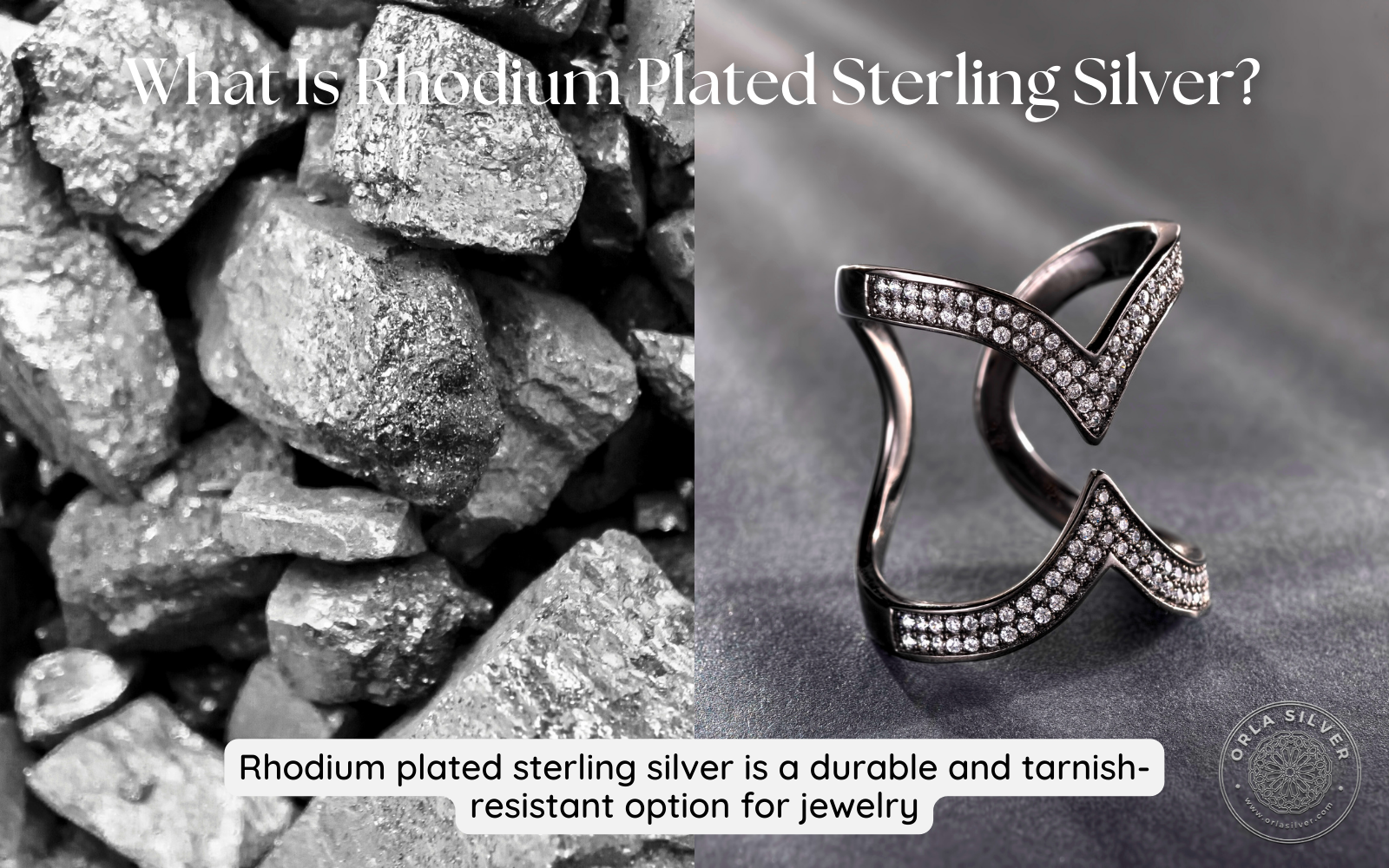
Is Rhodium Plated Sterling Silver Good Option For Jewelry?
Rhodium-plated silver can be a good choice for jewelry, depending on what you like and want. People like it because it does not tarnish easily, has a shiny appearance, is hypoallergenic, and is easy to care for.
Will Rhodium Plated Sterling Silver Tarnish?
Rhodium is a durable, hard metal that can resist tarnishing, scratches, and wear. But, the rhodium plating on sterling silver jewelry can wear off with time. This exposes the silver beneath it to air and other elements that can cause tarnish. How quickly this happens depends on factors such as how often the jewelry is worn, how much it is exposed to air and moisture, and the acidity of the wearer's skin.
Will Rhodium-Plated Sterling Silver Turn Your Finger Green?
Rhodium-plated sterling silver is a good option for people who are concerned about their jewelry turning their skin green or causing an allergic reaction. Sterling silver does contain copper and nickel, which can react with the acids and oils in your skin, causing discoloration and irritation. However, if it is coated with rhodium, it will become less prone to tarnishing and less likely to cause any reaction on the skin.
How to Clean Rhodium-Plated Sterling Silver?
It's crucial to be gentle when cleaning rhodium-plated silver jewelry, as harsh chemicals or abrasive materials can cause damage to the delicate coating. To avoid this, it's best to use gentle cleaning methods that won't harm the jewelry's finish. To clean this type of plated silver jewelry, place it in warm water and a small amount of dishwashing detergent and leave it for a while. A soft cloth or towel should be used to dry the item thoroughly.
What is Gold Plated Sterling Silver?
Gold-plated sterling silver is jewelry made by coating a layer of gold on top of a sterling silver base. The base metal, in this case, is sterling silver, a mixture of 92.5% pure silver and 7.5% other metals, such as copper. Sterling silver gold plated can come in various colors, including yellow gold, rose gold, and white gold.
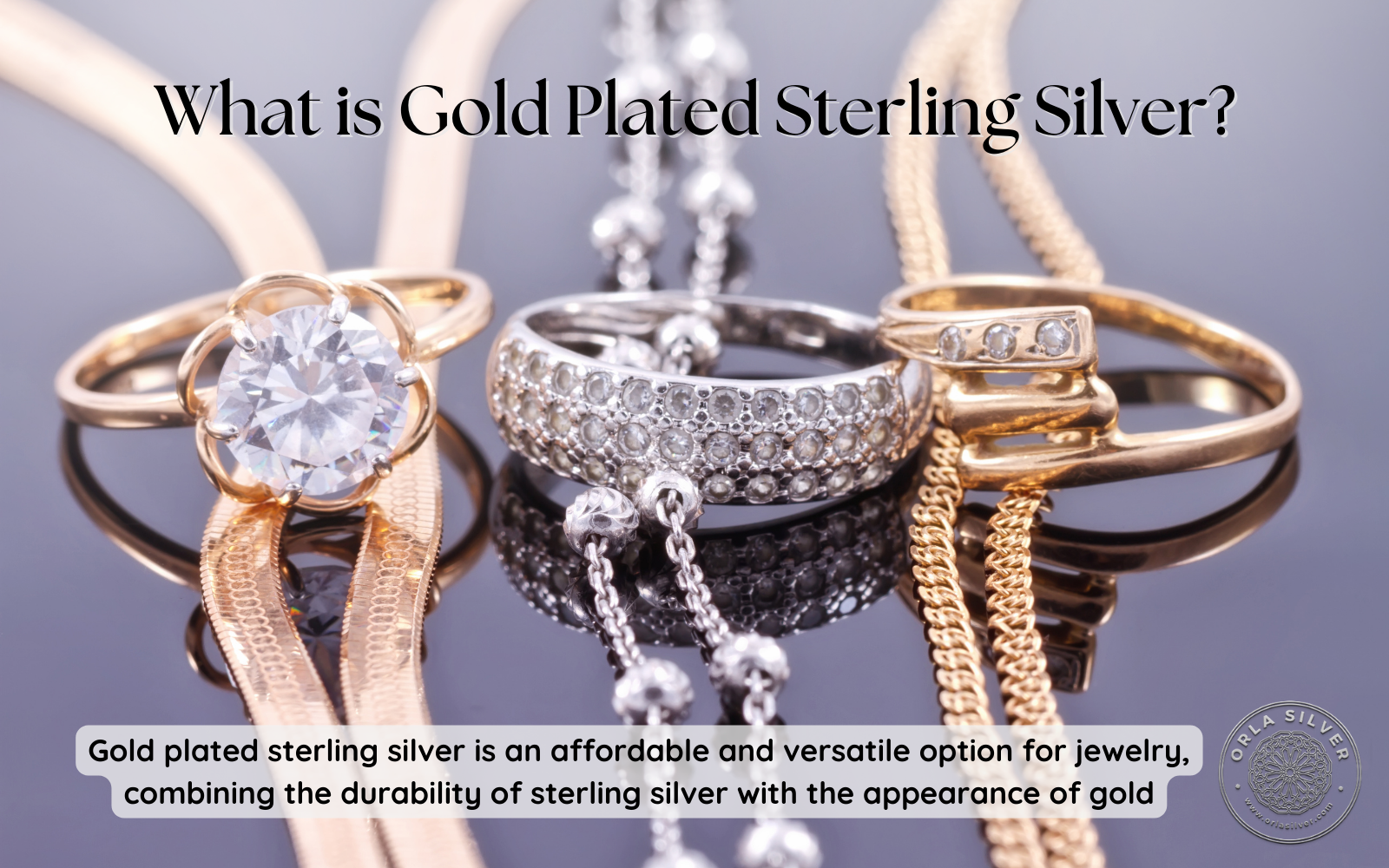
Is Gold Plated Sterling Silver Good Option For Jewelry?
Gold-plated sterling silver can be a good option for jewelry, but it depends on your preferences and needs. The jewelry is durable, resistant to scratches, tarnishing, and fading, and has non-allergenic properties.
Will Gold Plated Sterling Silver Tarnish?
Gold-plated sterling silver jewelry can tarnish over time, exceptionally if not cared for properly. The gold plating on the surface can wear away, exposing the sterling silver underneath, which can then react with the air and other substances to form a tarnish. However, regular cleaning and proper storage can help minimize tarnishing and prolong the life of the gold plating.
Will Gold-Plated Sterling Silver Turn Your Finger Green?
Gold-plated sterling silver jewelry is less likely to turn your finger green than other types of base metals used in jewelry, but it can still happen. The green discoloration is usually caused by a reaction between the metal in the jewelry and the natural oils and acids on your skin.
How to Clean Gold-Plated Sterling Silver?
A small amount of soap and warm water solution should be prepared to clean gold-plated sterling silver jewelry, which should be soaked in it, gently scrub with a soft-bristled brush or cloth, thoroughly rinsed, and then patted dry with a soft towel. Avoid using abrasive materials, harsh chemicals, or ultrasonic cleaners that can damage the gold plating.
Which is Better, Silver-Plated or Sterling Silver? Silver-Plated vs. Sterling Silver?
Sterling silver is generally considered better than silver-plated jewelry because it contains a higher percentage of pure silver and is more durable. Sterling silver consists of 92.5% pure silver, while silver-plated jewelry consists of a base metal coated with a thin layer of silver. The other difference between sterling silver and silver plated can be listed as follows.
- Sterling silver is generally more durable than silver-plated jewelry and less likely to tarnish or wear off.
- Because of its higher silver content and durability, sterling silver is usually more expensive than silver-plated jewelry.
- Silver-plated jewelry requires more delicate handling to avoid damaging the thin layer of silver, while sterling silver requires regular cleaning and maintenance to prevent tarnishing.
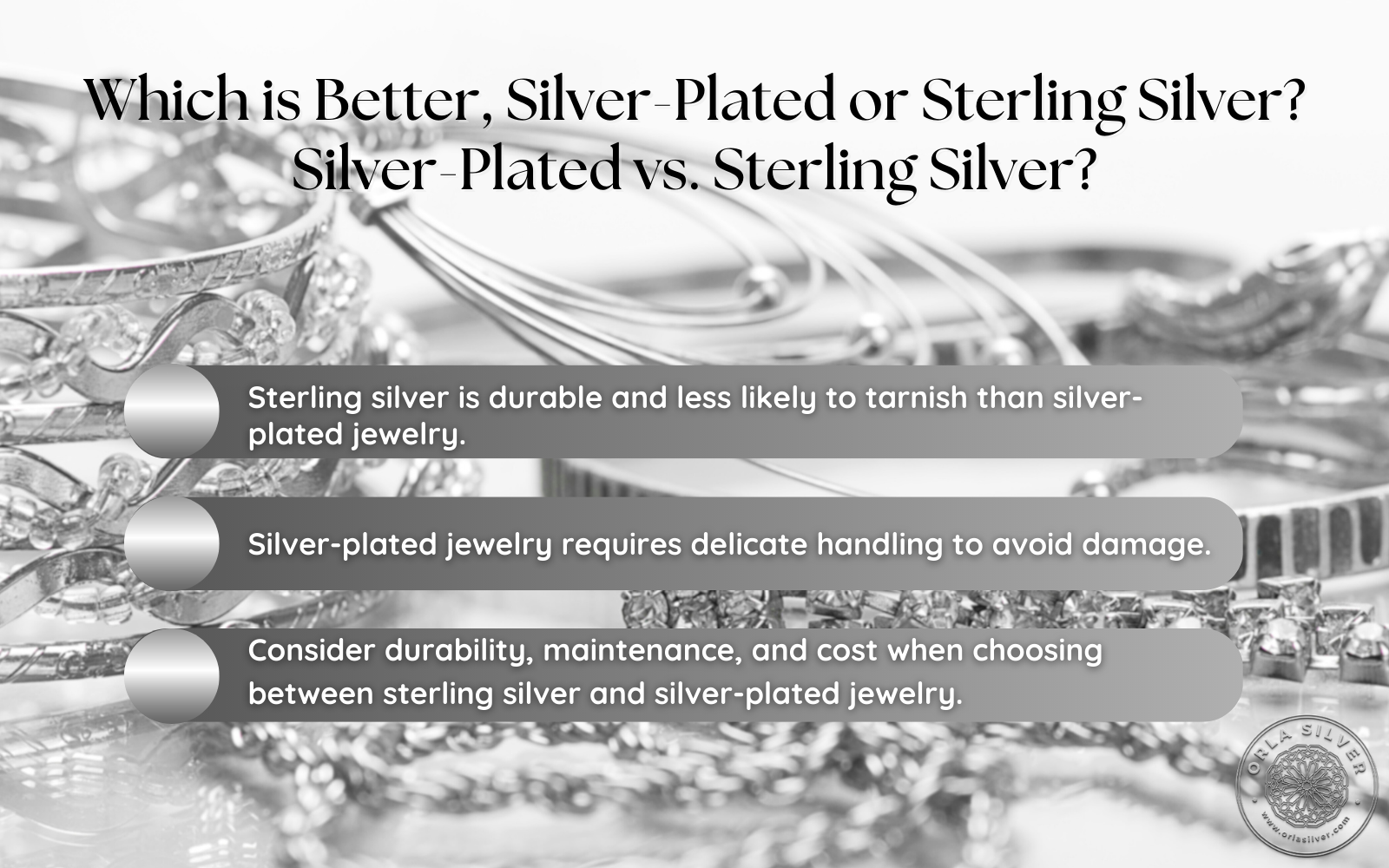
Which is Better, Rhodium Plated or Sterling Silver? Rhodium Plated vs. Sterling Silver?
Rhodium-plated jewelry and sterling silver both have their unique advantages and disadvantages. Here are some differences between sterling silver and rhodium-plated jewelry:
- Sterling silver is composed of 92.5% pure silver, while rhodium-plated jewelry is typically made of a base metal that is coated with a thin layer of rhodium.
- Rhodium plating gives jewelry a bright, reflective finish that is more resistant to tarnishing and scratches than sterling silver.
- Rhodium plating can increase jewelry's durability and make it more resistant to wear and tear than sterling silver.
- Rhodium-plated jewelry requires less maintenance than sterling silver and can often be cleaned with a soft cloth.
- Rhodium-plated jewelry can be more expensive than sterling silver due to the additional cost of the plating process.
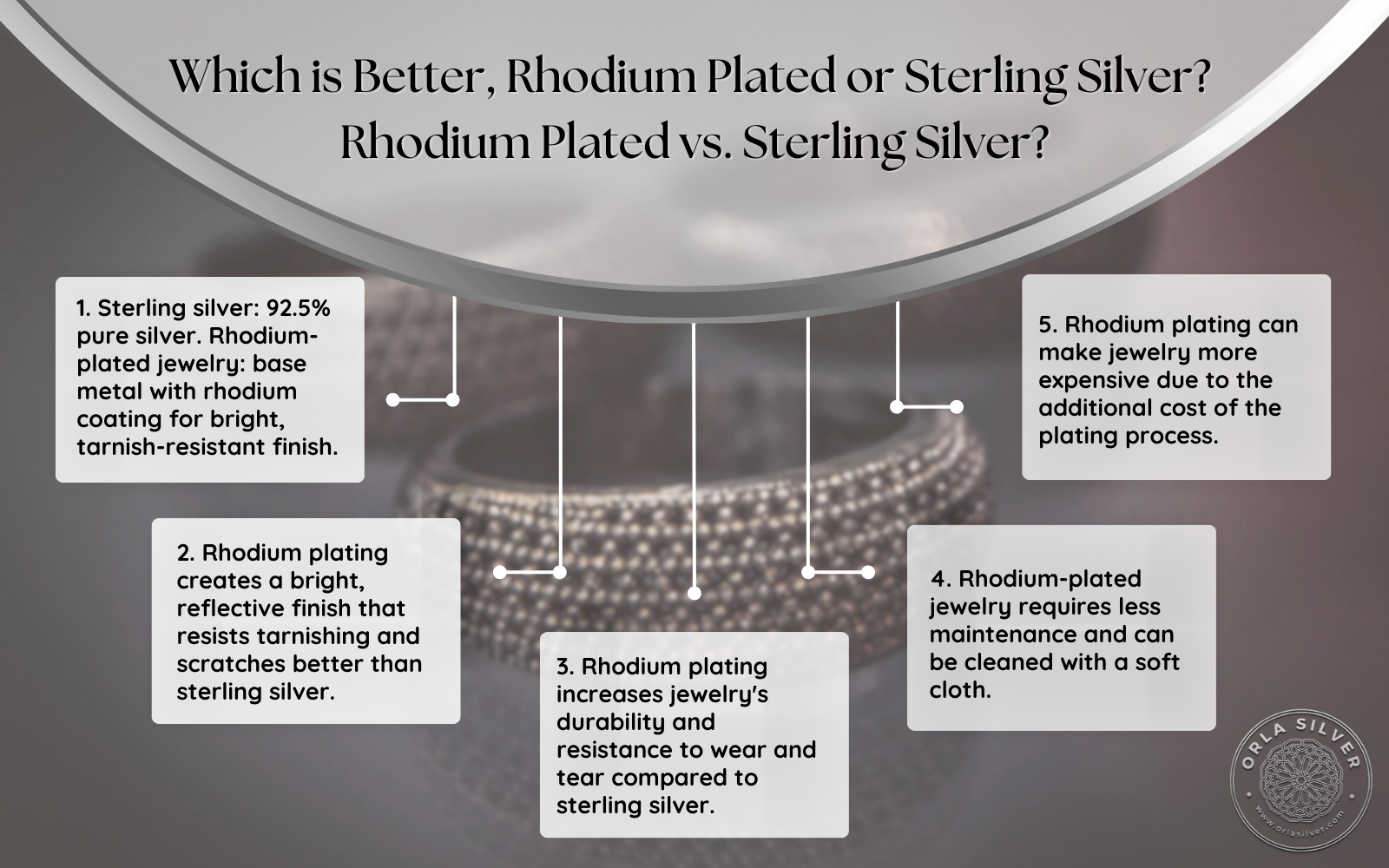
Which is Better, Gold Plated Or Sterling Silver? Gold Plated Vs. Sterling Silver?
The choice between gold-plated and sterling silver jewelry depends on personal preferences and requirements. However, here are some of the differences between these two types of jewelry:
- Sterling silver comprises 92.5% pure silver, while gold-plated jewelry is typically made from a base metal coated with a thin layer of gold.
- Gold-plated jewelry is less durable than sterling silver and may wear down or fade over time, while sterling silver is generally more resistant to wear and tear.
- Gold-plated jewelry offers a gold-like finish that resembles solid gold, while sterling silver jewelry has a brighter, silvery appearance.
- Gold-plated jewelry is a budget-friendly option with a gold-like appearance, while sterling silver jewelry is more durable and requires regular maintenance to keep its shine.
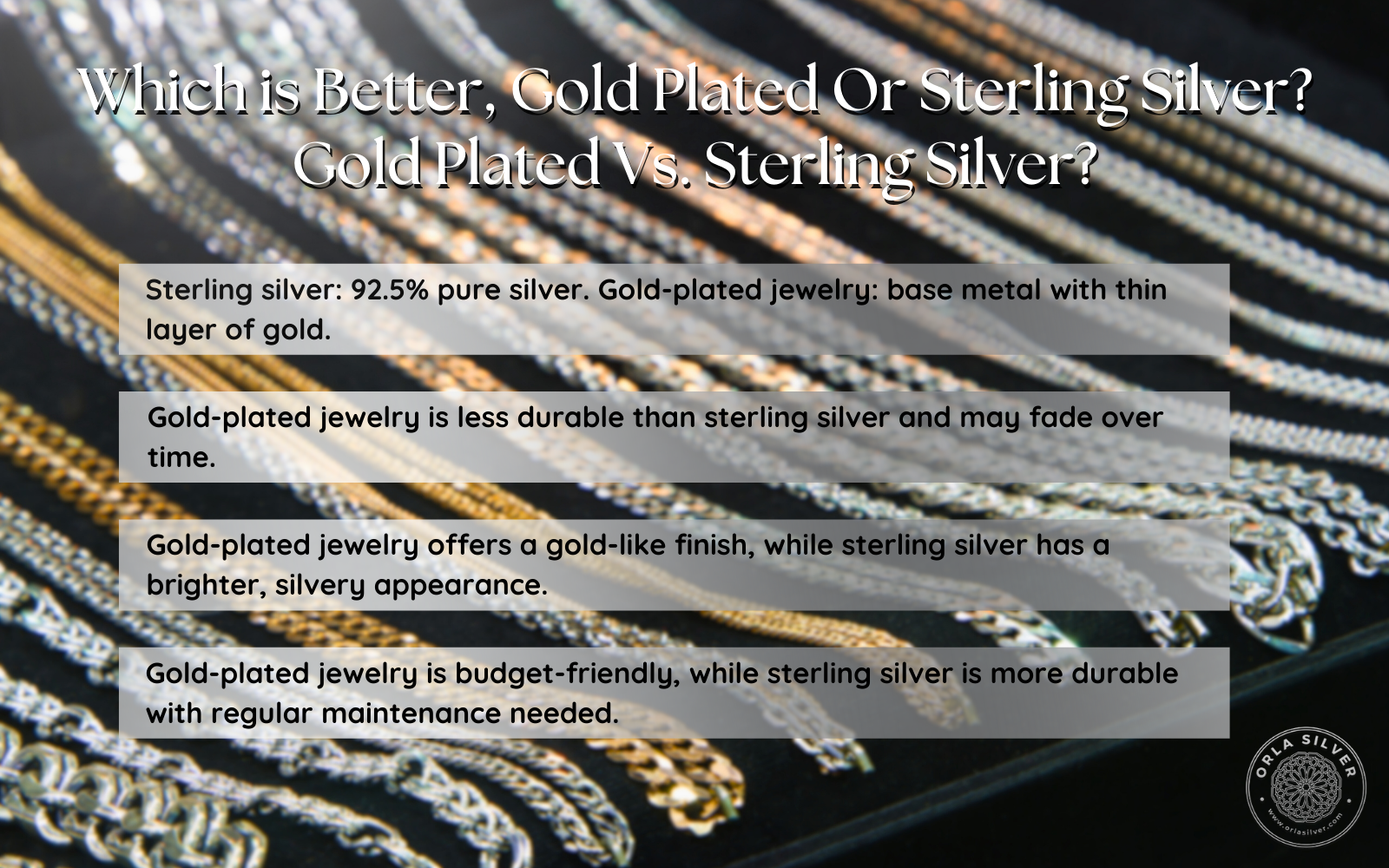
With years of experience and a commitment to customer satisfaction, we at Orla Silver offer a wide selection of silver jewelry for every occasion. Browse our collections today and find the perfect piece to commemorate your special moments.





